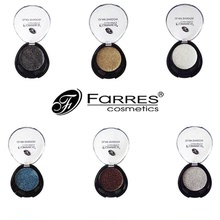Hands on with Google Pixel Slate
Google really nailed it with the Pixelbook. The laptop-tablet hybrid was a bit steep at $1,000, but boy was it one helluva fun work and play machine.
Google’s just-announced Pixel Slate is a departure from the Pixelbook and its flippable screen. With an attachable keyboard, the Chrome OS-powered tablet is more Microsoft Surface Pro and iPad Pro than clamshell laptop, which might not sit well with some people. The circle-shaped keys are also a particularly an odd choice.
SEE ALSO:I'm completely in love with Google's $1,000 PixelbookIn just a couple of years, Google has established itself as competent hardware company capable of making very premium phones and laptops with a high level of polish.
Premium fit and finish
The Pixel Slate is yet another Google device that looks and feels great. The tablet’s remarkably thin at 0.27 inches and the metal construction feels as sturdy as any premium tablet. Though it's thin, it's not super light; it's dense and you will feel the weight in one hand.
Google’s bumped up the screen resolution on the 3:2 12.3-inch display to 3,000 x 2,000 (up from the 2,400 x 1,600 on the Pixelbook) and reduced the bezels around it for a more modern look.
 With a 12.3-inch screen, the Slate's a big tablet.Credit: raymond wong/mashable
With a 12.3-inch screen, the Slate's a big tablet.Credit: raymond wong/mashableAt first ogle, it’s a very bright and sharp screen. But that’s not really saying much since I didn’t feel the Pixelbook’s screen and resolution was inadequate in any way besides the thick bezels.
Embedded into one of the bezels is an 8-megapixel front-facing camera. Around back, there’s also an 8-megapixel camera. Like on the Pixel 2 and Pixel 3, the cameras can shoot portrait-style shots with a blurred-out background without needing a dual camera system.
 The 8-megapixel cameras on the front and back can take portrait-style shots.Credit: RAYMOND WONG/MASHABLE
The 8-megapixel cameras on the front and back can take portrait-style shots.Credit: RAYMOND WONG/MASHABLEThere's no face unlock of any kind on the tablet. However, there's a fingerprint reader built into the side power button. The tablet has two USB-C ports for connecting accessories or to a display. But just like on the Pixel 3 phones, there's no headphone jack. I suppose it's time to invest in a pair of wireless headphones or get wired USB-C headphones (or a dongle).
 The power button doubles as a fingerprint reader.Credit: RAYMOND WONG/MASHABLE
The power button doubles as a fingerprint reader.Credit: RAYMOND WONG/MASHABLE There's two USB-C ports on the Slate — one on each side. No headphone jack, though.Credit: RAYMOND WONG/MASHABLE
There's two USB-C ports on the Slate — one on each side. No headphone jack, though.Credit: RAYMOND WONG/MASHABLEEmbedded into two of the bezels is a pair of front-firing stereo speakers. Google says these can get really loud. I couldn't really get a sense of their quality in the noisy demo area.
Choose your performance
If there was one thing that made the Pixelbook and Pixel laptops a tough sell, it was their sky-high prices. $1,000+ for a Chromebook (even a really nice one) is ridiculously pricey for many people.
And a big reason for why those past Google laptops were so expensive was performance. They came in fast (Intel Core i5 processor) and really fast (Intel Core i7 processor) — overkill for running mostly Chrome.
To hit a lower price point, Google’s Pixel Slate comes in more modest configurations.
At the entry-level is a Slate with an Intel Celeron processor (you read that right) with 32GB of storage and 4GB of RAM starting at $599; there's also a version with 64GB of storage and 8GB of RAM for more (Google's site doesn't list how much more).
Moving up from that is an 8th-gen Intel Core processor with 64GB of storage and 8GB of RAM starting at $799.
For the more demanding user, there’s a Slate with an 8th-gen Intel Core i5 chip with 128GB of storage and 8GB of RAM for $999, and a model with a screaming 8th-gen Intel Core i7 processor with 256GB of storage and 16GB of RAM for $1,599.
Google only had the two higher-end models available for demo so I can't tell you how well the Slates with the punier Celeron and m3 chips perform (my guess is not very fast).
 I noticed some touchscreen latency on the demo units.Credit: RAYMOND WONG/MASHABLE
I noticed some touchscreen latency on the demo units.Credit: RAYMOND WONG/MASHABLEThe i5 and i7 models are fast, but I still noticed some touchscreen latency on a couple of the devices. Scrolling was sometimes jittery and the touchscreen responsiveness wasn't as smooth on an iPad Pro.
Of course, these weren't retail units so the software can still be tweaked before launch. If you've used a Chromebook you'll be right at home with Chrome OS on the Slate. Android apps work even better than they did a year ago, too.
Google says battery life is up to 12 hours of "mixed use" and I'll definitely be testing those claims soon.
Not sure about the keyboard
I absolutely loved typing on the Pixelbook’s satisfyingly clicky keyboard, which is why I’m so conflicted over the keys on the new attachable keyboard cover (sold separately).
For whatever reason, they keys are rounded. The letter keys are circles and other keys like the function row buttons, space bar, and enter key are pill-shaped. They match the Material Design look of the Chrome OS and Android software, but they’re not very practical on a keyboard.
 Ugh. Round keys.Credit: RAYMOND WONG/MASHABLE
Ugh. Round keys.Credit: RAYMOND WONG/MASHABLEPoorly designed keys will ruin any device that’s supposed to be used for typing. Microsoft sold the terrible Touch Cover keyboard for the original Surface tablets and almost everyone hates the flat keys on Apple’s MacBook Pros.
While I’m hesitant to say the rounded keys on the Slate keyboard are bad because I haven’t spent enough time typing on it — the keyboard is at least spacious and the keys have a good amount of travel to them — there’s a reason why rounded keys aren’t really a thing on keyboards: Square and rectangle keys are larger and better for accuracy.
I’ve had some experience typing on keyboards with rounded keys. I’ve used Logitech’s K380 Bluetooth keyboard before and, well… it didn’t last more than a day on my desk before I tossed it back into our gadget closet.
 The keyboard attaches via these magnetic pins.Credit: RAYMOND WONG/MASHABLE
The keyboard attaches via these magnetic pins.Credit: RAYMOND WONG/MASHABLEOn the bright side, if you don’t like Google’s official Slate keyboard, you can pick up a third-party keyboard like the new Brydge G-Type, which turns the tablet into more of a clamshell device and has proper non-rounded keys.
The trackpad on the other hand is really responsive. I also really appreciate that the palm rest is no longer made of a weird rubbery texture that’s easily stained.
 The trackpad is excellent.Credit: RAYMOND WONG/MASHABLE
The trackpad is excellent.Credit: RAYMOND WONG/MASHABLEAnother thing I wasn't a fan of on Google's keyboard folio: lapability. Microsoft perfected its Touch Cover Keyboard for the Surface Pro by having it snap onto the display's bottom bezel, which makes the tablet and keyboard easier to prop on your lap.
With a folded backside (adjustable at various angles, but still) instead of a proper kickstand and a flopping keyboard, I almost dropped the Slate several times while trying to type with it on my lap. I'm calling it now: The Slate and keyboard are only good as a combo on a flat surface.
Like the Pixelbook, you can also pick up a stylus (sold separately of course) if you’re the doodling or note-taking type.
The numbers don't completely add up
 RIP Surface Pro?Credit: RAYMOND WONG/MASHABLE
RIP Surface Pro?Credit: RAYMOND WONG/MASHABLEThe iPad is still the best tablet, and the Surface Pro (with a keyboard) is the best laptop replacement that also happens to be a handy tablet.
The Pixel Slate, however, seems to split the difference between the iPad Pro and Surface Pro. It’s certainly a very nice tablet that runs Android apps and with a keyboard and the desktop version of Chrome (extensions and all), but I'm concerned about performance (especially with the slower processors), the keys, and the poor lapability.
There's no question that $599 seems like a better value than the $1,000 Pixelbook. But when you add in Google's keyboard, which is another $199, the total for the entry-level Slate balloons up to $800.
And if you're gonna pay that much for a tablet with a Celeron chip, you might as well save up just a little more and get a Surface Pro (5th gen) with at least an Intel Core m3 processor and full Windows 10.
I'll need to spend real time with the Slate on a daily basis to see how well it holds up as both a tablet and laptop replacement, but if we're going right by the numbers, I'd personally rather pay $1,000 for the Pixelbook (Google isn't discontinuing it yet) with a Core i5 processor than $1,200 total for a Slate with a Core i5 chip. It's not like the Pixelbook was a slouch.
Featured Video For You
We tested Google Lens at a Corgi meetup and it failed
相关文章

Travel Back in Time and Uncover Old
Oozing with Old-World charm, Boston’s Beacon Hill is a time-traveler’s dream. Stay in a hotel that o2024-09-22
Samsung asks QLED TV owners to run a virus scan
If you own a smart TV, chances are you've hooked it up to the internet in order to access popular ap2024-09-22
Everything we know about Google's Pixel 4
Google's next Android phone, the Pixel 4, isn't coming until the fall, but we may already know a num2024-09-22
Google, Apple say no to UK intelligence agency’s plan to listen in on encrypted chats
Google, Apple, Microsoft, WhatsApp and numerous other companies and organizations have publicly oppo2024-09-22 采购商+48,英德红茶在泉城济南蹭蹭涨粉_南方+_南方plus8月26日,2024山东济南国际秋季茶产业博览会在舜耕国际会展中心落下帷幕。四天11家来自广东清远的茶企参与现场展销推介,展区内总人流量超2024-09-22
采购商+48,英德红茶在泉城济南蹭蹭涨粉_南方+_南方plus8月26日,2024山东济南国际秋季茶产业博览会在舜耕国际会展中心落下帷幕。四天11家来自广东清远的茶企参与现场展销推介,展区内总人流量超2024-09-22
Huawei cancels laptop launch because of U.S. ban
Huawei has cancelled its planned launch of a new laptop due to a recently imposed U.S. ban that forb2024-09-22

最新评论